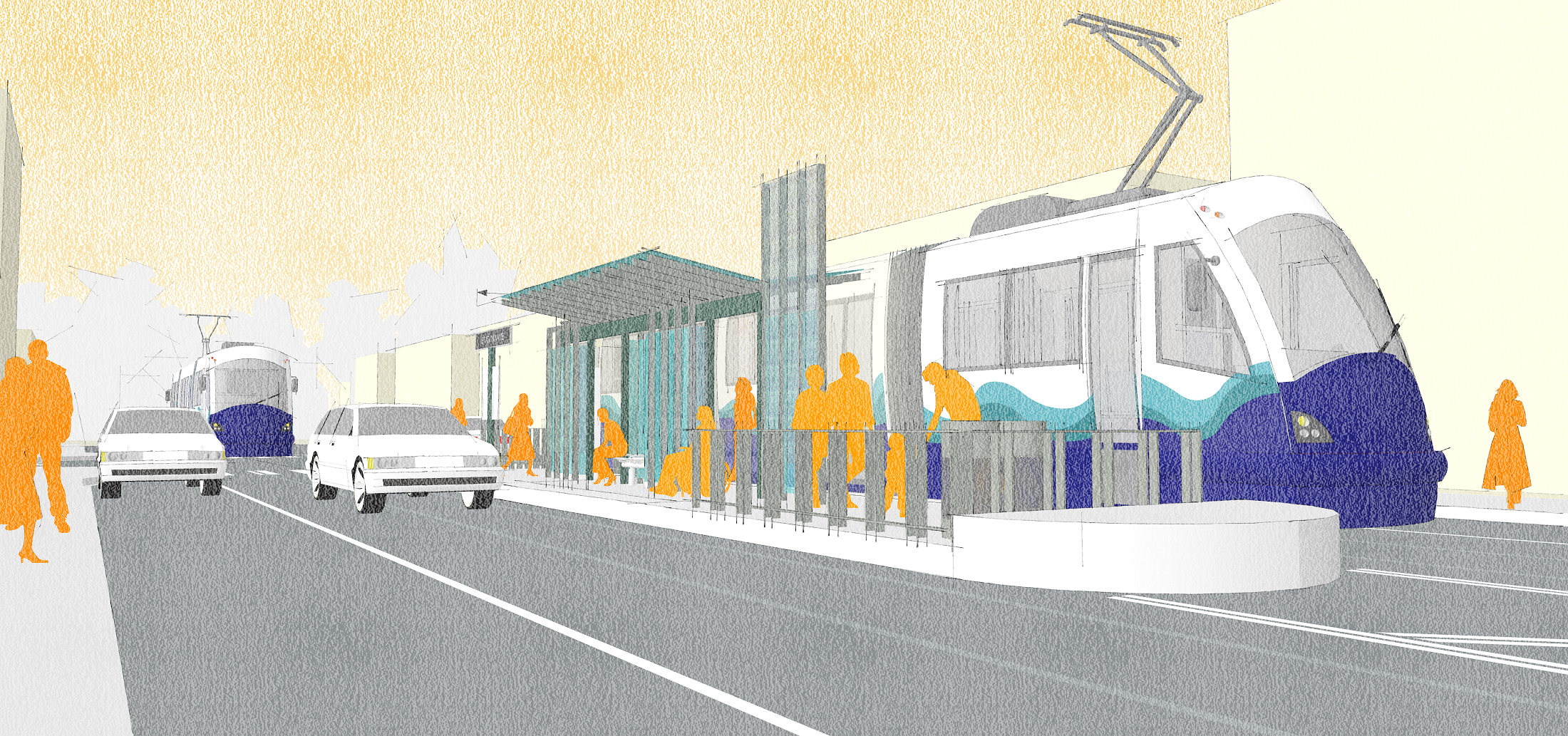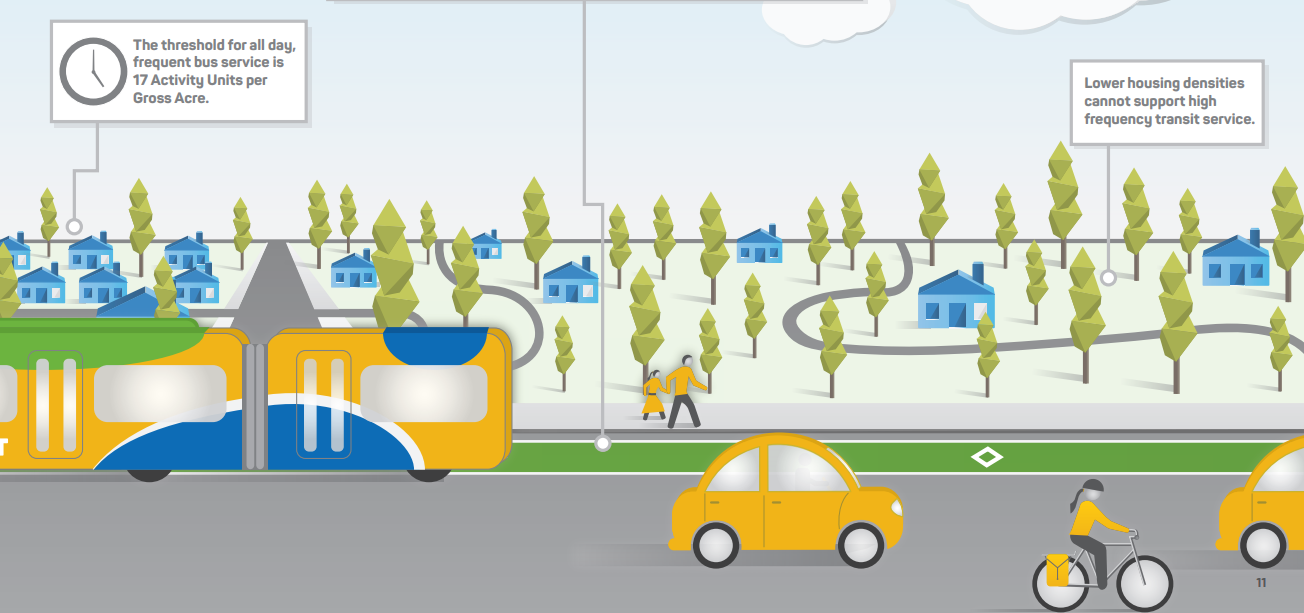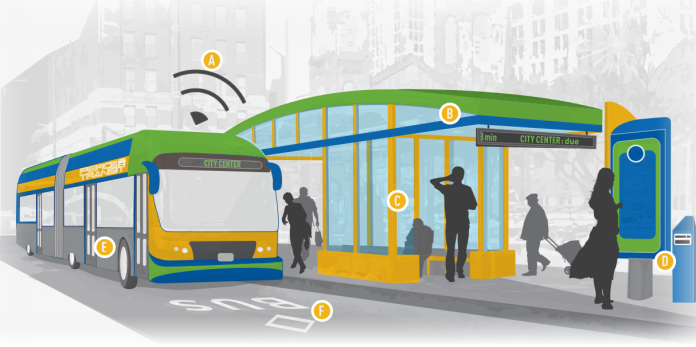Tacoma is growing. City, county, and regional leaders and planners are working to meet this growth with transportation options aligned with state mandates and community needs. The three biggest transit projects looming on the horizon are the Link light rail extension from Federal Way to Tacoma, the extension of Tacoma Link into the Stadium District and Hilltop, and the introduction of bus rapid transit (BRT) between Spanaway and downtown Tacoma.
One thing a city’s approach to growth tells you is who among its residents it sees, and who it doesn’t—and how it sees them. This is especially the case when it comes to transit.
In some areas, transit is seen as that which serves the poor, that is, people who cannot afford a private, single-occupant vehicle. These places see transit as a service to provide for people until they can get a car—a temporary option as opposed to a way of life. Rather than seeing public transit as a long-term solution to manage traffic congestion, reduce pedestrian deaths, and eliminate the isolation that afflicts so many in the U.S., these places reluctantly operate buses, light rail, and commuter trains at their own expense.
Increasingly, urban areas see transit as an option for all and as a way to address not only mobility, but a bevy of pressing and interrelated social and environmental concerns.
The Pierce Transit Long Range Plan, titled Destination 2040, in laying out a vision for the future that “improves people’s quality of life” recognizes that a challenge to achieving this vision will require it to create “a culture of transit.” Even as many users of transit in Tacoma are those who have no other transportation options, any long-term and sustainable vision for transit requires a large part of its customer base to be those who use transit because they choose to.
It helps that current trends show a desire to live in communities where people can get around without having to rely on a single-occupancy vehicle. According to Pierce Transit, 72% of millennials say they prefer to live in a place where they don’t solely rely on cars. A key to the success of Tacoma’s and Pierce Transit’s vision for transit lies squarely with this desire; rather than seeing transit as secondary to single-occupancy vehicles, this approach “embraces transit, bicycling, and walking as primary travel modes.”

In fact, Tacoma’s plan pushes the use of single-occupancy vehicles to the bottom of the inverted pyramid the plan uses to visualize how people in the city will get around. Pedestrians sit at the top, followed by bicycles, then public transit. These three modes get the biggest share of public roads, followed by commercial vehicles, then vehicles used for carsharing, then vanpools/carpools. The least amount of space on roads is allotted to cars and trucks carrying a single person to work, school, the market, etc.
What sort of city results from a transportation plan that apportions public throughways like this? One which prioritizes people, enhances quality of life, and protects the environment. A city that prioritizes equity of mobility and the kind of moving around that results in greater vitality.

This is where Tacoma’s plan aligns with the region’s and the state’s goals for sustainable growth. According to the Washington State Department of Transportation, 1,336 people lost their lives in motor vehicle crashes in a two-year span (2012-2014). This statistic is what motivated state officials to adopt a policy called Target Zero with the goal of reducing traffic fatalities and injuries to zero by 2030. Seattle set the same goal calling it Vision Zero.
Washington isn’t alone in this endeavor: in total, about 30 cities have pledged to reduce traffic fatalities and injuries in this dramatic fashion within seven-to-ten years. To see those results, cities, regions, and states will need to take up drastic measures—measures like getting more people onto buses and other modes of public transit and out of cars. It will require cultivating “a culture of transit” that many places in the U.S. sorely lack.
Take California, a state I grew up and to which I returned to for a short stint after finishing school. There, Governor Brown recently set an audacious goal for the state: to be 100% clean energy by 2045. To get to this goal, the state is requiring automobile makers to sell many, many more zero-emission vehicles in the state. The governor wants five million more of these on California roads by 2030.
While it’s commendable (and necessary) to reduce carbon emissions drastically and dramatically, a policy like California’s isn’t as radical or as far-reaching as it seems. In fact, it’s severely limited when one considers why a state might want to reduce carbon emissions to begin with: to improve vitality and to increase quality of life.
Getting to 100% clean energy by putting more—millions more—single-occupancy vehicles on the road may help clear the air, but it does nothing to create or sustain the types of communities which promote health, connection, and which makes people think and say, “I love where I live.”
Governor Brown’s and California’s policy shift is destined to have a limited impact because it doesn’t call for or promote a shift in the way Californians think about moving. It does nothing to create a culture of transit in a place where such a culture is needed most (it’s true that Californians love cars). As such, California may get to a point where it boasts cleaner air, but where the length of commutes increase and traffic fatalities continue to rise.
One should be weary of pronouncements made in the name of the environment. If the state’s goal is to actually cut carbon emissions it would call for fewer single-occupancy vehicles, not more: Transportation a la California is the state’s top source of carbon emissions.
This is why a comprehensive transit plan represents a much more effective way to curtail environmental impact, prevent death and injury, and promote quality of life. If a community or state wants to support local economies, high-capacity transit helps there, too, according to Smart Growth America.
The Tacoma Link extension, the Link light rail extension, more bike lines, increased Sounder service, and the introduction of BRT—these represent a citywide and regional commitment to the people of Tacoma and the South Sound. They are all facets of a response to growth that may well encourage more of it.
Tacoma: Public Space and Public Life

Rubén Casas
Rubén joined The Urbanist's board in 2022. He is a scholar and teacher of rhetoric and writing at the University of Washington Tacoma. He is also the faculty lead of the Urban Environmental Justice Initiative at Urban@UW. In his work and advocacy, Rubén examines how cities and the institutions that comprise them imagine, plan, and build in ways that promote and/or discourage community and a sense of place.

